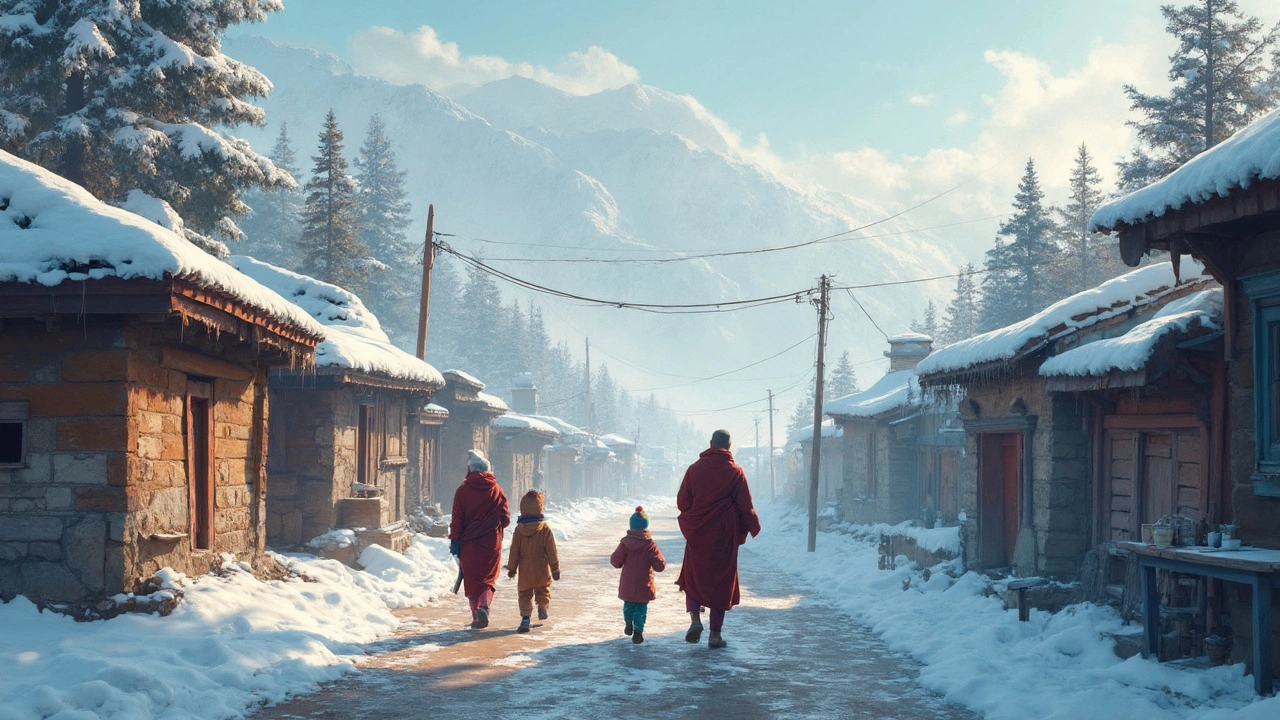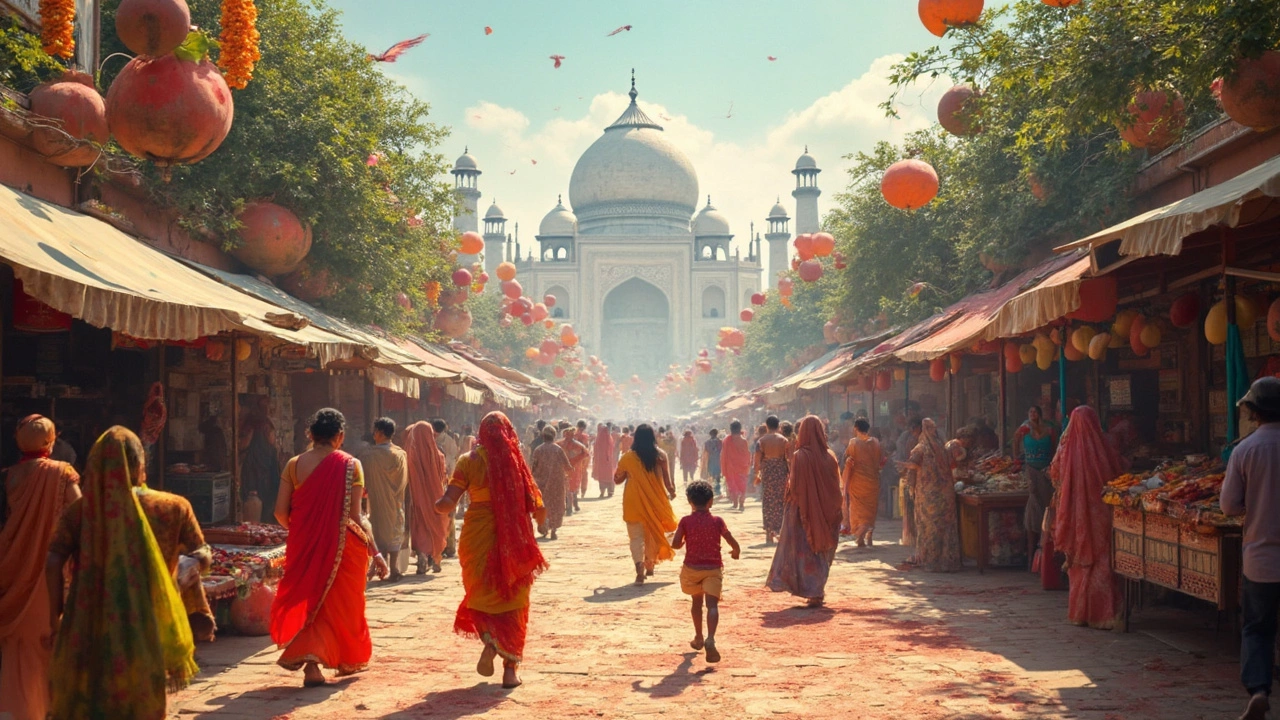North India doesn’t mess around with weather. The difference between a magical trip and a sweaty struggle can come down to timing. If you’re picturing misty Taj Mahal sunrises, sipping chai under a cool sky, or hiking in the Himalayas without sweating through your shirt—trust me, you want to pick the right season. Most folks assume you can rock up whenever, but even locals avoid certain months for sightseeing. Crowds, prices, and even street food can change with the weather.
The peak season (spoiler: it’s not summer) is when you’ll see North India at its brightest, with clear views and lively festivals everywhere. But there are also off-peak pockets where you get quiet temples and cheaper stays—sometimes just a week or two makes all the difference. Whether you’re aiming for Rajasthan’s forts, Delhi’s chaos, or the snowy Himalayas, a bit of planning means less sweating, fewer lines, and way more stories to bring home. If you’ve got kids (like my son Finnian), choosing the right time is priceless—no meltdowns guaranteed.
- Why Timing Matters in North India
- Breakdown of Major Seasons
- Best Months for Top Destinations
- Extra Tips for Families and Adventurers
Why Timing Matters in North India
If you’ve ever thought about the best time to visit India, chances are you’re really asking about North India’s wild weather shifts and tourism rhythm. Every season here changes what you see, where you go, and honestly, whether you actually enjoy it.
The weather swings from blistering heat in May and June to bone-chilling cold in December and January. Delhi’s summer highs regularly top 40°C (104°F). Monsoon? You’ll get some wild rain, sticky humidity, sudden downpours, and travel delays from June through September. On the other hand, the cool, dry winter months—late October to March—are when places like Agra and Jaipur look and feel their best. No one enjoys sightseeing when it feels like walking inside an oven or you’re soaked to your socks.
The timing doesn’t just matter for comfort, either. Many of North India’s best festivals—think Diwali in October/November or Holi in March—are worth planning a whole trip around. Tourist crowds peak in winter, so prices shoot up for hotels and trains. If you’re traveling with kids, like I do, trust me: dragging them through a summer heatwave can make the Taj Mahal seem a lot less magical.
Even landscape can flip with timing. Go in spring and you’ll get lush greenery after the monsoon. Head to the Himalayas in winter, and you might hit snowed-out roads or closed mountain trails, but it’s epic for those after some snow play. Food carts change up their menus too—hot samosas in winter, cooling lassis in spring.
- North India weather sets your daily plans: scorching heat or mountain breezes make every day different.
- Costs can double in peak months, and famous sights fill up fast.
- Local experiences—like seeing the Ganges aarti at Varanasi—feel totally different depending on season and crowds.
| Month | Avg Temp (°C) | Rain | Tourist Flow |
|---|---|---|---|
| January | 8-22 | Low | High |
| May | 29-41 | Very Low | Low |
| August | 26-34 | High | Medium |
| November | 13-29 | Low | High |
So if you want your India travel tips to actually work, pay close attention to timing. Plan smart, and you’ll catch North India at its liveliest, tastiest, and most beautiful.
Breakdown of Major Seasons
If you’ve ever wondered why guides rave so much about winter in North India, here’s why: the region gets wild swings between seasons. Knowing what to expect will save you from packing the wrong stuff or, worse, picking a time when sights are closed or smothered in haze. Here’s what you really need to know about the North India weather timeline.
- Winter (October to March): This is the gold standard for most travelers. Think cool days, chilly evenings, and skies so clear you can actually see the mountains. Delhi, Agra, Jaipur—these cities actually feel breathable. Rajasthan’s deserts are perky with music and colors, while places like Varanasi host huge festivals. But this is also when everyone (and their grandma) is visiting Taj Mahal, so expect crowds and higher prices, especially around Christmas and New Year.
- Summer (April to June): Unless you’re sticking to the Himalayan hill stations like Shimla, Manali, or Dharamshala, the plains are roasting. We’re talking 40°C (104°F) and above. Many locals escape to the hills, so it’s actually a great time for mountain road trips if heat’s your enemy. The bigger cities? Mostly a sweaty ghost town after 11 a.m. Sunscreen, hats, and gallons of water—don’t skip these!
- Monsoon (July to September): Some folks love the drama of monsoon. Suddenly everything turns shockingly green, and hotels drop their prices. But train delays, flight hiccups, and sudden street floods are a real thing. The Taj Mahal looks extra epic with dramatic clouds, but exploring cities like Delhi means dodging puddles all day. Still, if you’re aiming for Ladakh or Spiti, this is surprisingly solid—those areas sit in rain shadows, barely touched by downpours.
To sum it up, best time to visit India (especially the north) is mostly winter if you want easy sightseeing. But if you’re on a budget or don’t mind a bit of unpredictability, shoulder seasons can throw in some nice surprises. If you have kids or older parents in the group, play it safe and avoid the baking or flooded months.
| Season | Months | Avg Temp (°C) | Pros | Cons |
|---|---|---|---|---|
| Winter | Oct–Mar | 8–20 | Great weather, Festivals, Clear Views | Higher Prices, Big Crowds |
| Summer | Apr–Jun | 25–45 | Hill Stations Best, Fewer Tourists | Extreme Heat, Plains Unbearable |
| Monsoon | Jul–Sep | 22–35 | Lush Landscapes, Bargains | Floods, Delays, Humidity |

Best Months for Top Destinations
If you want to make the most of your North India tourism experience, nailing the right month matters almost as much as picking your sightseeing list. Weather, crowds, and how much you'll actually enjoy the vibe can change a lot from one place to another—even inside the same state. Here’s what you need to know for the most popular spots.
Delhi & The Golden Triangle (Delhi, Agra, Jaipur): Late October to mid-March is hands down the sweet spot. The days are cool and usually clear, with temperatures hovering between 10°C and 25°C (50°F to 75°F). You can actually walk around Old Delhi and the Taj Mahal without frying in the heat. December and January do get chilly, especially in the mornings—grab a sweater, but skip heavy coats unless you’re extra sensitive to cold.
Rajasthan (Jaipur, Jodhpur, Udaipur, Jaisalmer): The dry winter months (November to February) make exploring Rajasthan’s forts and markets way more comfortable. In summer, most locals stay inside during the afternoons—it gets brutally hot, with highs sometimes hitting 45°C (113°F) in places like Jaisalmer. If you’re traveling in January, you also get bonus festivals like the Jaipur Literature Festival, which gives the city an extra jolt of energy.
| Destination | Best Months | Avg. Temp (°C) | Why Go Now? |
|---|---|---|---|
| Delhi/Agra | Nov-Feb | 10-25 | Comfortable, less smog, clear views |
| Jaipur/Udaipur | Nov-Feb | 10-27 | Pleasant for forts/markets, festival season |
| Amritsar | Nov-Mar | 8-22 | Golden Temple reflections, food walks |
| Varanasi | Nov-Mar | 10-26 | Less humid, sunrise boat rides |
| Himalayas (Shimla/Manali) | Mar-Jun, Oct-Nov | 10-25 | Hiking, fewer crowds, snow (winter) |
Himalayas (Shimla, Manali, Dharamshala): If you want to see snow or try skiing, late December to February is your window. But keep in mind, roads might close due to weather, and every hotel gets booked fast for winter break. For hikers and folks who just want crisp air and views—March to June or October to November work better. The monsoon (July-August) brings landslides and road headaches, so it’s best to avoid.
Varanasi & The North Plains: Varanasi is famous for its riverside rituals, but the summer heat is no joke—think 40°C (104°F) or higher. Stick with November to March for boat rides at sunrise and the best street food season. Nights can get nippy but nothing two layers can't handle.
- Tip: If you’re hunting for deals, late September and early October sometimes squeeze in good weather with fewer crowds. Same with late March, right before peak heat kicks in.
- Festival months mean the cities come alive—but book early, because everyone else has the same idea!
Choosing the best time to visit India isn’t just about weather. Festivals, local school holidays, and even crop harvests can affect traffic, hotel prices, and how easy it is to get train tickets. If you plan ahead and aim for these months, you’ll dodge the biggest headaches and actually get to enjoy the magic that makes North India special.
Extra Tips for Families and Adventurers
Bringing the whole crew to North India? Or ready to get off the beaten track? Either way, a little know-how goes a long way. The peak best time to visit India—from October to March—makes life easier for families, with milder weather and more straightforward travel between hotspots like Delhi, Jaipur, and Agra. Still, these months can get crowded, especially near the winter school break in December and January.
If you’ve got kids, here’s what really helps:
- Pace yourself. North India’s forts and bazaars are cool, but trying to see three cities in four days is a meltdown waiting to happen. Plan longer stays in fewer places, swapping frantic day trips for relaxed mornings and late breakfasts.
- Stick to filtered or bottled water everywhere. Kids’ stomachs can get grumpy fast.
- Pack light layers—even in winter, mornings are chilly but afternoons warm up in most spots except the mountains.
- Trains are half the adventure in North India, but book 2AC or 3AC classes a month or more ahead for comfort and safety, especially around festival season.
If you’re more the adventure type—think hiking, rafting, or even camel safaris—your ideal North India weather window can shift:
- For the Himalayas (places like Rishikesh, Manali, or Leh) plan May or September. July and August bring heavy monsoon rain and landslides, sometimes closing mountain passes.
- Rajasthan’s desert adventures (camel safaris and stargazing) pop between November and February. After March, it’s just too hot for fun, and summer may hit 45°C (113°F) in Jaisalmer.
- Festival chasers should time trips for Diwali (Oct–Nov) or Holi (Mar), but lock in hotels early—prices can double.
For reference, here’s a quick table with average temperatures for popular North India tourism spots in January, perfect for families and adventurers alike:
| City | Avg Low (°C) | Avg High (°C) |
|---|---|---|
| Delhi | 7 | 20 |
| Agra | 8 | 21 |
| Jaipur | 9 | 22 |
| Manali | -2 | 10 |
Always double-check local holidays and school schedules—they change every year and can impact crowds and travel times. Google Maps is your friend for spotting traffic jams between cities, especially when heading out early with restless kids. And remember: be flexible. Some of our best family memories (and wildest stories) came from late trains, surprise festivals, or just stumbling onto a street snack Finnian begged me to try.
